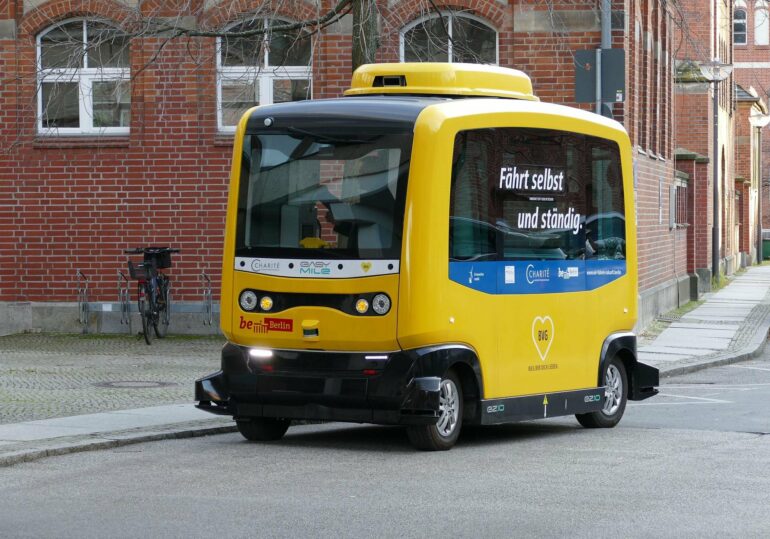Fully automated vehicles (AVs), or driverless cars, will be commonplace sooner than we may think. Right now, car makers and transportation network companies—also known as ridesharing companies—are steering AV development. Without public input, this market-driven approach could worsen traffic congestion, sideline public transit and increase social inequities. It could also hit state and local budgets hard, as revenues from taxes, parking and associated activities dry up.
But new research from the University of Minnesota published in the Transportation Research Record shows how, by planning carefully for AVs, we could make the most of this technology revolution to improve transportation and make it more equitable for all.
A large interdisciplinary team, led by College of Science and Engineering professor Zhi-Li Zhang, examined one potential solution: shared automated vehicles (SAVs). The team examined not only how SAV networks could work but also their likely impacts on society.
The researchers used a hypothetical SAV system based on Minneapolis–St. Paul to explore several scenarios for SAV adoption in a medium-sized metropolitan area known for its urban planning and varied weather. They identified issues that policymakers, planners and mobility-on-demand companies must address to create an integrated system of SAVs—and, ultimately, a healthy, equitable, livable and prosperous future.
The study found:
SAV systems are feasible—and possibly very beneficial—in communities like the Twin Cities.SAV systems could strengthen—not weaken—existing transit systems by providing cost-effective service on low-ridership routes.SAV systems have the opportunity to address the serious transportation equity issues.
The study found that SAVs could, in particular, have a large impact on the public transportation industry. By combining SAVs with existing fleets, the study suggests agencies could right-size transit routes for the number of riders. Core transit systems would stay in place, and trains and buses would continue to serve densely populated areas.
SAVs could be deployed on low-ridership suburban routes. The cost savings from removing large low-ridership buses could be invested in high-ridership routes, attracting more demand and increasing the quality of service.
The study also found that automated vehicles have the potential to transform transportation services and improve mobility for many people—or they could worsen equity issues embedded in the existing system.
“Well-designed, communities employing pools of SAVs of varying sizes with efficient connections to high-quality public transit could bring about far-reaching societal change—providing inexpensive mobility services to all people, building stronger family and community ties, and boosting economic productivity and equity by removing mobility as a constraint,” said co-principal investigator Yingling Fan, a professor in the Hubert H. Humphrey School of Public Affairs.
However, researchers emphasize that “could” is the operative word with their research findings. Making it happen equitably depends on many important decisions, including work from policymakers, planners and other officials to prepare for the next technology revolution. For example, cities should start to plan how street parking and garages could be repurposed for green space and affordable housing. And because automation will disrupt work for many people who drive for a living, policymakers should prepare to soften the blow.
“How can local communities leverage emerging technology? Ridesharing companies have the data now to know how people move around. TNCs are using public roads, so there should be a benefit to the public from the data,” said principal investigator Zhi-Li Zhang. “Let’s put this money back into the community.”
More information:
Noah Wexler et al, Gauging Public Attitudes and Preferences Toward a Hypothetical Future Public Shared Automated Vehicle System: Examining the Roles of Gender, Race, Income, and Health, Transportation Research Record: Journal of the Transportation Research Board (2022). DOI: 10.1177/03611981221090512
Provided by
University of Minnesota
Citation:
Shared automated vehicles could make cities more livable, equitable (2022, December 12)



